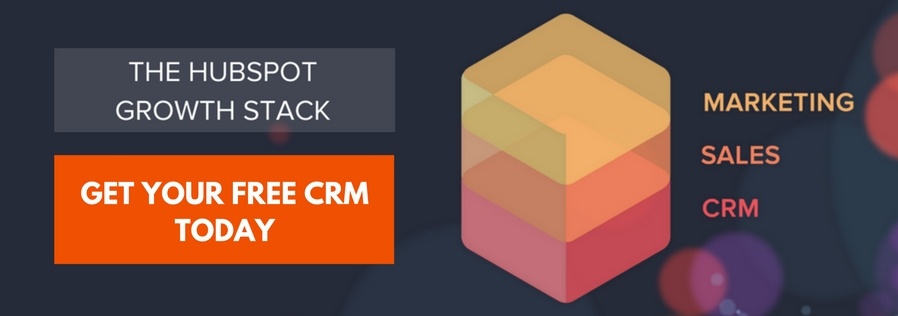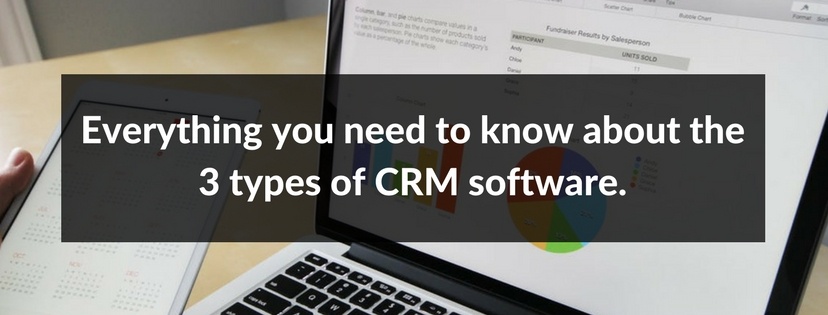
Over the past 20 years, the focus of businesses around the world has shifted towards customers. This approach includes actions such as:
- Identifying customer needs;
- Creating a product or service around them;
- Collecting data about them; and
- Creating content for them;
This change in business philosophy has been around since the 70s, where data about customer behavior was collected and analyzed to understand its implications on revenue and operations.
Since then, CRM systems have been growing at a steady pace with artificial intelligence being woven into them as well.
Having identified the need for CRM tools, the technology industry has unleashed numerous softwares into the market – to provide choices to entrepreneurs and compete in one of the most wanted areas of business intelligence.
Although there are hundreds of such softwares out there, we need to draw a line on what category do they fall under. Defining such boundaries is crucial to understand the scope of these tools.
In this article, I’ll shed some light on the 3 different types of CRM software and at the end, I’ll recommend you a CRM that can be the perfect fit for your business.
Let’s start.
Following are the 3 different types of CRM software that I’ll explain in more detail:
- Operational CRM;
- Analytical CRM;
- Collaborative CRM;
1) Operational CRM
Operational CRM assists businesses in the daily tasks that includes marketing, sales, customer service, research and so on. It also has the capability to automate and streamline certain actions that are repetitive in nature and don’t require human involvement.
This is one of the most popular CRM types because of its convenience and application in most businesses.
Operational CRMs have the following capabilities built within:
- Marketing automation: In simple terms, marketing automation is the set of tools that allows you to put your marketing tasks on auto-pilot mode. Although it requires initial configuration, once done right, it can smartly take over major components of the marketing function. This helps the marketing manager focus on more creative and strategic aspects of the business.
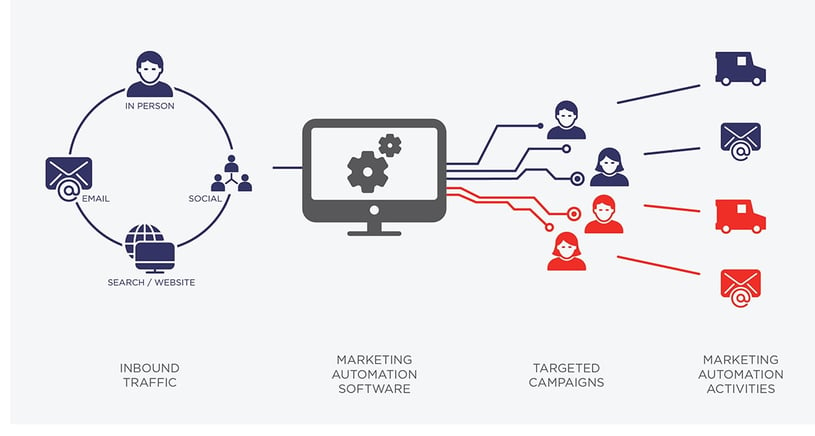
USPS Delivers does a great job in simplifying the marketing automation process as shown above.
This module of operational CRM follows a funnel approach, where leads are identified and nurtured based on what stage of the buyer’s journey they are in.
For example, if a lead filled up a form on your website, marketing automation can trigger an automatic email to guide that lead to take the next steps until they become a profitable customer or subscriber. - Sales force automation: With the help of this feature, a company can easily manage its pipelines, leads, customers and in fact, all aspects of the sales process. Sales force automation manages the complete sales function – from recording contact information of leads to converting them into revenue-generating clients.
By streamlining each stage of the sales cycle, the CRM can send automated emails based on which funnel the leads are in, as well as identifying and segmenting them into the right category that falls under your business.
It is a powerful ally for marketing automation and manages data on customers like their name, profile, tracking number, purchase history, previous marketing activities, queries, interaction, behavior and so on.
In short, sales force automation is the perfect comrade for your sales team when it comes to matters that are administrative and repetitive in nature. - Service automation: This type of automation places customer service at the center of its operations. It filters through customers’ activities via emails, website, calls and social media and alerts your customer service team in case there’s an action that requires attention.
If you’ve ordered something online, you’ll be familiar with an instant email that you received containing details of your order, contents, tracking number and days required to get it delivered. This is one of the many feats of a service automation function.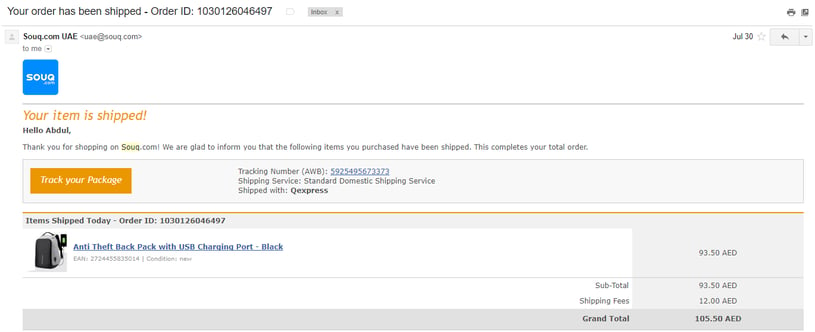
Emails like the one above can easily be triggered automatically using service automation.
Mundane & repetitive tasks can be conveniently delegated to the CRM so that customer service agents can handle more urgent matters such as disputes, live chats and emergencies.
The service automation market is developing rapidly and therefore, has the potential to replace human customer service agents in the future using artificial intelligence and advanced bots.
Check out how Hubspot, a leading CRM software acquired Kemvi to bring machine learning to sales and marketing functions.
2) Analytical CRM
I’ll use just 2 words to describe this type of CRM software: Data management.
Since data is one of the building blocks of business, analytical CRM collects data from online and offline sources such as company website, calls to action, emails, social media, calls, text messages, direct contact and even IoT (internet of things).
Once all this data is gathered, it’s made sense of using a CRM to understand customer trends, sales activity, revenue forecasts, inventory management and so on. Availability of in-depth data at such a granular scale is instrumental in building the next sales or marketing strategy as well as understanding the direction of business growth.
Analytical CRM takes care of business functions such as:
- Data management: Being the centralized hub of all data touchpoints, you can view, segregate, analyze and create reports on data that matters to individual departments as well as the whole organization. This gives the respective managers some insight into the firm’s performance and future;
- Customer segmentation: By having access to granular data on visitors, leads, prospects and customers, you can group them based on their age, gender, location, income and interests. This level of segregation enables you to create customized promotions and draft communication for targeted customers for better conversion rates which results in higher retention rates and brand loyalty.
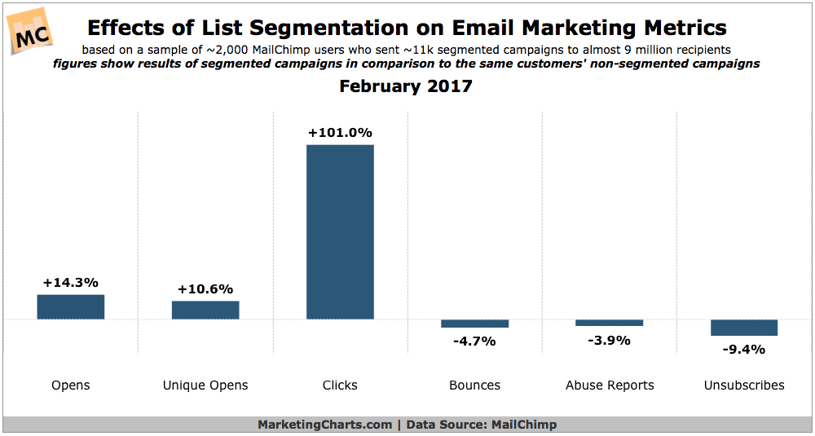
The leading data research firm, Marketing Charts has published the above statistic to highlight the advantages of list segmentation in your CRM; - Figurative analysis: Due to the vast amount of data at your disposal, a CRM can easily take all the necessary metrics into account to create profitability reports. It can take into account values such as costs of interaction, marketing & support as well as factors such as invoice value, credit score, lifetime value of customers and so on.
With the help of a lead scoring mechanism, it can assign different levels of importance based on individual factors to grade each customer accordingly. Having a system this intelligent provides the management a transparent report of the firm’s actual health, which helps in devising appropriate strategies in the short and long run; - Action monitoring: Depending on how leads are behaving on your website, you can get detailed reporting on their actions. This function of an analytical CRM also allows you to create actions based on a pre-set criteria.
For example, if customers spend more than 500 dirhams on your website, they can get an automatic discount or incentive. By doing this, you’re saving yourself and your sales team from the hassle of manually reviewing records and performing actions based on a given criteria.
You can also setup additional dialog windows to gather feedback, ratings or comments to collect more targeted and quality data from individual customers; - Predictions and forecasts: The data available in the CRM can understand your clients’ online behavior as well as other factors such as country of operation, national holidays and so on to predict trends, inventory needs, product dispatch, staffing requirements and so much more.
Using data from past behavior, the predictive analytics function of CRM can inform sales reps to make better sales calls by studying the customers’ past actions and purchases;
All the different data sets mentioned above can easily be gathered from various sources such as surveys, polls, interviews, outgoing calls, social media, email and data collection service providers.
3) Collaborative CRM
As the name suggest, this CRM is to manage collaborative efforts between separate managements, stakeholders and businesses. It enables the various parties involved in a business to identify, acquire, develop, retain and maintain valuable clients. Although its largely used in a B2B area, its application is not limited to just that scope.
You can benefit from a constant and worry-free source of communication among the stakeholders to get up to speed with transactional and strategic information.
Although emails, telephone and fax machines are widely used, collaborative CRM software introduces new forms of communication such as web forums, Voice over Internet Protocol (VoIP), online chat and Electronic Data Interchange (EDI).
The key application of this CRM is to nurture relationships with all the parties involved in business such as suppliers, vendors, distributors, social marketing organizations, governments, local governing bodies and so on. With the ability to share customer data, business intelligence and market news, it unites all bodies into one centralized powerful unit to make crucial decisions.
A simple example of this type of CRM is the interlinking of customer support with the marketing department – where feedback from the support team and directly be shared with the marketing team to develop strategies and enhance the customer experience.
Here's an excerpt from the famous corporate comic series, Dilbert, indirectly highlighting the perils of not using a collaborative CRM for intermanagement communication.
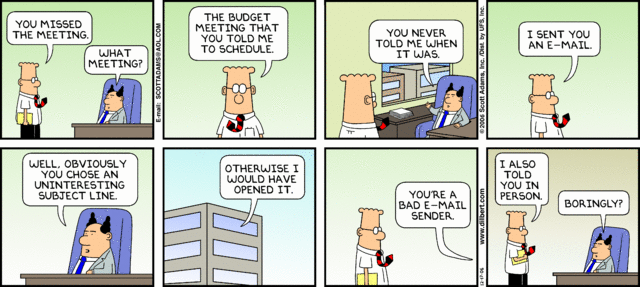
The end result of every management is to improve the business process and create a delightful customer experience that maximizes retention and reduces complaints. Having a multi-channel source of communication ensures that no stone is unturned in running an efficient business.
As promised at the beginning of the blog, here's the recommended all-in-one CRM to help you get started.



